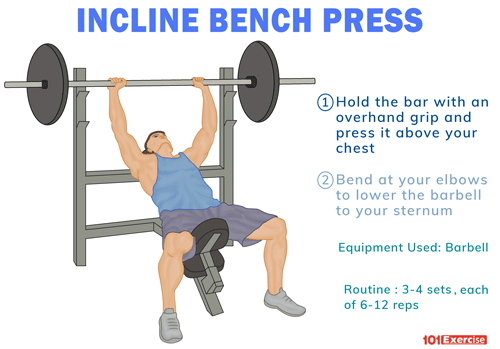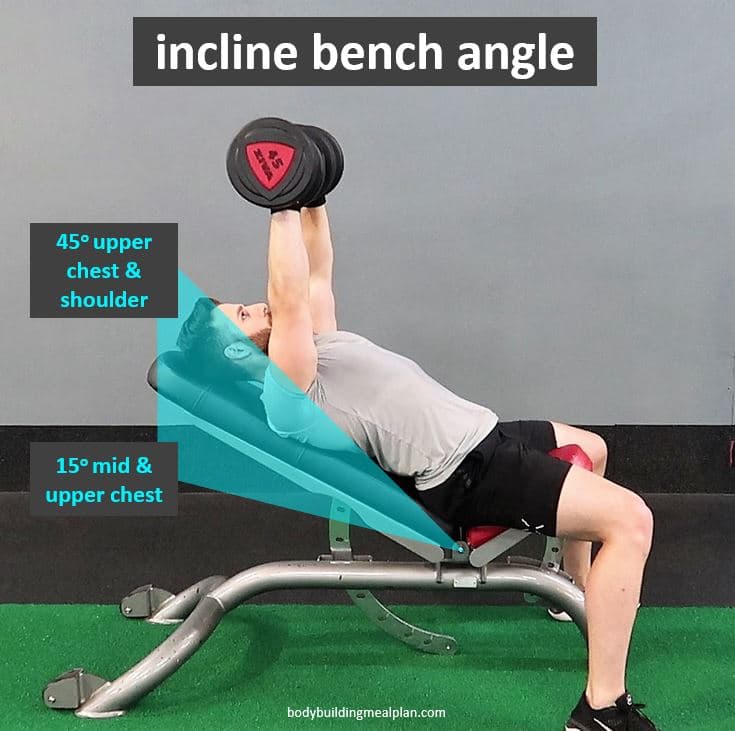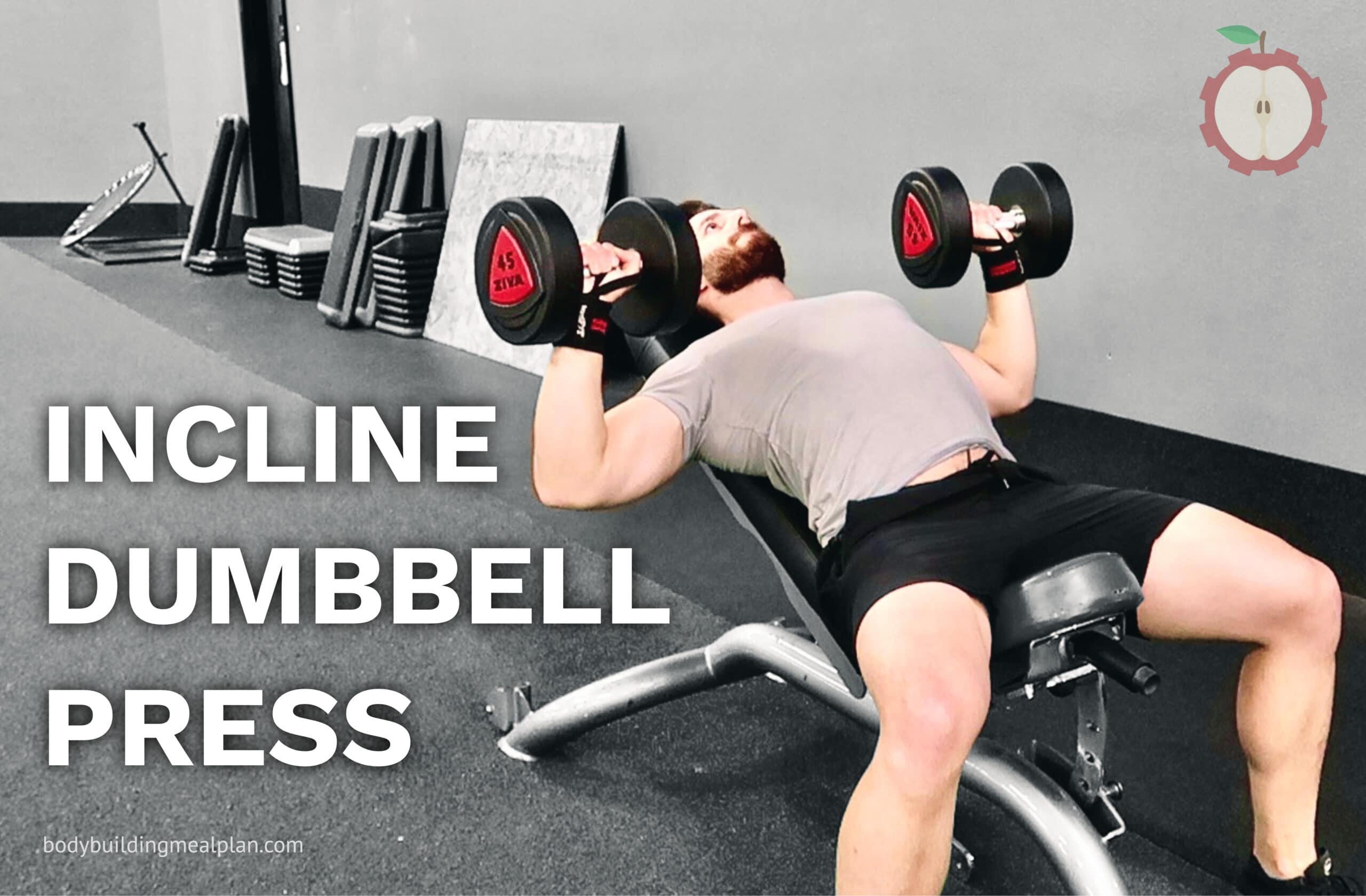Are you looking for an effective way to build strength and muscle in your upper body? Have you ever tried incorporating the 15 degree incline bench press into your workout routine? If not, you’re in for a treat!
In this article, we will explore the various benefits of the 15 degree incline bench press and the muscles that it targets. So, let’s dive in and discover how this exercise can help you achieve your fitness goals!
The 15 degree incline bench press is a fantastic exercise that specifically targets your upper chest muscles, shoulders, and triceps. By inclining the bench at a 15 degree angle, you are able to activate these muscles in a different way compared to the traditional flat bench press.
This variation allows for a greater range of motion, which ultimately leads to more muscle recruitment and better overall development. Not only does the 15 degree incline bench press help you build a well-rounded upper body, but it also improves your overall pressing strength.
So, whether you’re a seasoned lifter or a beginner just starting out, incorporating this exercise into your routine can greatly benefit you. Keep reading to learn more about the proper form and variations of the 15 degree incline bench press!

What is 15 Degree Incline Bench Press?
Definition of 15 Degree Incline Bench Press
The 15 Degree Incline Bench Press is a variation of the traditional bench press exercise that targets the upper chest muscles. As the name suggests, the bench is angled at a 15-degree incline, which changes the angle of the movement and shifts the emphasis to different muscle groups.
How it Differs from Other Bench Press Variations
The 15 Degree Incline Bench Press differs from other bench press variations, such as the flat bench press and decline bench press, in terms of the angle of the bench. The incline bench press targets the upper portion of the pectoral muscles, while the decline bench press places more emphasis on the lower chest. The flat bench press, on the other hand, targets both the upper and lower chest evenly.
Importance of Proper Form
Why Proper Form is Important in 15 Degree Incline Bench Press
Maintaining proper form during the 15 Degree Incline Bench Press is crucial to maximize its benefits and reduce the risk of injury. Proper form ensures that the targeted muscles are effectively engaged and prevents unnecessary strain on other muscle groups.
Common Mistakes to Avoid
- Bouncing the barbell off the chest: This can lead to injury and takes away the focus from the muscles being worked.
- Flaring the elbows out too much: This puts excessive strain on the shoulder joints and can lead to discomfort and injury.
- Not keeping the shoulder blades retracted: Failing to retract the shoulder blades reduces stability and can compromise form and performance.

Muscles Targeted in 15 Degree Incline Bench Press
Primary Muscles Worked
The primary muscles targeted in the 15 Degree Incline Bench Press are:
- Upper Chest (clavicular fibers of the pectoralis major): The incline angle places greater emphasis on the upper portion of the chest, helping to develop a well-rounded chest and enhance the appearance of the pectoral muscles.
- Anterior Deltoids (front shoulder muscles): The incline bench press also activates the front shoulder muscles, contributing to overall shoulder development and strength.
Secondary Muscles Worked
In addition to the primary muscles, the 15 Degree Incline Bench Press also targets the following secondary muscles:
- Triceps: The triceps muscles act as synergists during the pressing movement, assisting the chest and shoulders in pushing the weight.
- Biceps: The biceps muscles help to stabilize the shoulder joint during the exercise.
- Rhomboids and Upper Back: These muscles work to stabilize the shoulder blades and maintain proper form.
- Core Muscles: The core muscles engage to stabilize the upper body during the pressing movement.
Benefits of 15 Degree Incline Bench Press
Increased Upper Chest Activation
One of the key benefits of the 15 Degree Incline Bench Press is its ability to target and stimulate the upper chest muscles. Traditional bench press variations primarily focus on the middle and lower portions of the chest, neglecting the clavicular fibers of the pectoralis major. By incorporating the incline bench press into your training routine, you can develop a more balanced and aesthetically pleasing chest.
Enhanced Shoulder Stability
The 15 Degree Incline Bench Press also offers the advantage of improved shoulder stability. The incline angle places the shoulders in a more neutral and stable position, reducing the risk of shoulder impingement and injury. Strengthening the shoulder muscles through this exercise can help promote overall shoulder health and function.
Improved Strength and Hypertrophy
Including the 15 Degree Incline Bench Press in your training program can lead to significant improvements in overall upper body strength and muscle hypertrophy. The exercise recruits multiple muscle groups, allowing for heavier loads to be lifted and stimulating muscle growth.
Reduced Shoulder Stress
The incline bench press places less stress on the shoulder joints compared to exercises that require a greater range of motion, such as the flat bench press. This can be particularly beneficial for individuals with pre-existing shoulder issues or those looking to minimize stress on the shoulder joints while still effectively targeting the chest and shoulder muscles.
Enhanced Performance in Other Upper Body Exercises
By strengthening the upper chest and shoulder muscles, the 15 Degree Incline Bench Press can have a positive impact on your performance in other upper body exercises. The increased upper chest activation can lead to improved bench press performance, while enhanced shoulder stability can benefit exercises such as shoulder presses and push-ups.

Training Program Incorporating 15 Degree Incline Bench Press
Number of Sets and Reps
To optimize the benefits of the 15 Degree Incline Bench Press, it is recommended to perform 3-4 sets of 8-12 repetitions. Adjust the weight used accordingly to ensure that the desired rep range is achieved while maintaining proper form.
Frequency of Training
Incorporating the 15 Degree Incline Bench Press into your training program 1-2 times per week is generally sufficient. This allows for proper recovery and muscle growth without overtraining.
Progressive Overload Principles
To continue making progress with the 15 Degree Incline Bench Press, it is important to apply progressive overload principles. Gradually increase the weight lifted, add more repetitions, or decrease the rest periods between sets to challenge your muscles and stimulate further strength and muscle gains.
Variations of 15 Degree Incline Bench Press
Barbell 15 Degree Incline Bench Press
The barbell 15 Degree Incline Bench Press involves the use of a barbell loaded with weights. This variation allows for the greatest amount of weight to be lifted, making it suitable for individuals focused on strength and power development.
Dumbbell 15 Degree Incline Bench Press
The dumbbell 15 Degree Incline Bench Press involves using dumbbells instead of a barbell. This variation offers increased stability and allows for a greater range of motion, providing a unique challenge to the muscles.
Smith Machine 15 Degree Incline Bench Press
The Smith machine 15 Degree Incline Bench Press utilizes a guided barbell on a fixed vertical track. This variation provides added stability and is beneficial for individuals who may struggle with balancing or maintaining proper form during the exercise.

Precautions and Safety Measures
Warm-up and Stretching Exercises
Before performing the 15 Degree Incline Bench Press, it is important to warm up the muscles and joints involved. This can be done through dynamic stretching exercises and a few sets of lighter, warm-up sets of the exercise itself. Warming up helps to increase blood flow, improve flexibility, and reduce the risk of injury.
Use of Spotter
When lifting heavy weights, it is always advisable to have a spotter present to provide assistance if necessary. A spotter can help ensure that the weight is lifted safely and assist in the event of muscle fatigue or failure.
Appropriate Weight Selection
Selecting an appropriate weight is essential to maintain proper form and avoid injury. Start with a weight that allows you to complete the desired number of repetitions with proper technique. Gradually increase the weight over time as your strength and form improve.
Breathing Techniques
Proper breathing techniques are important during the 15 Degree Incline Bench Press to maximize performance, stability, and safety. Inhale before lowering the weight and exhale forcefully during the pushing phase of the movement. This helps to stabilize the core and promote optimal performance.
Common Mistakes to Avoid
Lifting Too Heavy
One of the most common mistakes in the 15 Degree Incline Bench Press is lifting too heavy of a weight. It is important to choose a weight that allows for proper form and control throughout the entire range of motion. Lifting weights that are too heavy can compromise form, increase the risk of injury, and hinder progress.
Improper Elbow Position
Many individuals tend to flare their elbows out excessively during the 15 Degree Incline Bench Press. This puts undue stress on the shoulder joints and can lead to discomfort or injury. To maintain proper form, keep your elbows at a comfortable and natural angle, slightly tucked in towards your body.
Arching the Back
Another common mistake is excessive arching of the back during the exercise. While some degree of arching is normal, excessive arching can lead to lower back strain and compromise form. Focus on maintaining a neutral spine throughout the movement and engage your core muscles to provide stability.

15 Degree Incline Bench Press vs Flat Bench Press
Differences in Muscles Targeted
The main difference between the 15 Degree Incline Bench Press and the flat bench press lies in the muscles targeted. While both exercises engage the chest, shoulders, and triceps, the incline bench press places greater emphasis on the upper chest muscles, while the flat bench press evenly targets the entire chest.
Benefits of Incorporating Both Exercises
Incorporating both the 15 Degree Incline Bench Press and the flat bench press into your training routine offers several benefits. By targeting different areas of the chest, you can achieve a more balanced and aesthetic chest development. Additionally, varying the exercises helps prevent plateaus, improves strength and muscle gains, and enhances overall upper body strength.
Conclusion
Incorporating the 15 Degree Incline Bench Press into your training routine can offer a range of benefits, including increased upper chest activation, enhanced shoulder stability, improved strength and hypertrophy, reduced shoulder stress, and enhanced performance in other upper body exercises.
However, it is important to prioritize proper form, warm-up adequately, and select an appropriate weight to minimize the risk of injury and maximize results.
Remember to listen to your body, progress gradually, and consult with a fitness professional if needed. Enjoy the benefits of the 15 Degree Incline Bench Press and watch your upper body strength and muscle development flourish.




